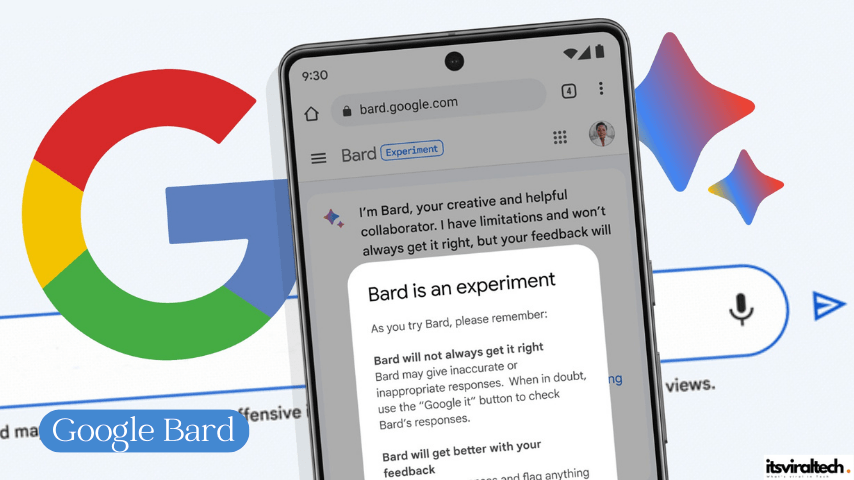With the success of OpenAI’s ChatGPT, Google came out with Bard, their own AI chatbot. Now that it’s widely available, let’s get into what you need to know about this amazing new technology!
What is Google Bard/Google AI?
Meet Bard — Google’s experimental, conversational AI chat service. It functions similarly to ChatGPT, but with one key difference: Bard pulls information from the web.
If you’re curious about anything under the sun, Bard’s got you covered.
As with other AI chatbots, Google Bard handles coding, and math problems, and supports your writing. With precision and ease, Bard is readily equipped to be a reliable AI assistant for all your needs.
When was Google Bard announced?
On February 6th, Sundar Pichai, CEO of Google and Alphabet, announced the arrival of Bard, a new concept powered by their Language Model for Dialogue Applications (LaMDA). LaMDA, having been launched two years prior, was instrumental in creating an AI-driven chat service that delivers human-level conversation. Bard is a significant development, having been designed to offer an experience that is of that same level of quality.
How does Google Bard work?
Google Bard is powered by Google’s very own and most advanced large language model (LLM) PaLM 2, which was unveiled at Google I/O 2023.
Bard’s efficiency, productivity and overall performance is expected to soar, thanks to the new PaLM 2 version – a significant upgrade from its predecessor, which launched in April 2022. Furthermore, any previous issues will also be addressed.
The lightweight LaMDA model version was utilized for the preliminary release of Bard, as it consumes less computational resources and accommodates more users. This allowed more people to experience the benefits of using the service and offered efficient scaling opportunities.
LaMDA leverages Transformer, Google’s neural network architecture that it invented and open-sourced back in 2017. Strangely enough, ChatGPT’s language model GPT-3 is also built on Transformer, as confirmed by Google.
Google’s decision to implement its proprietary LLMs, LaMDA and PaLM 2, was a daring move considering that other popular AI chatbots such as ChatGPT and Bing Chat rely on an LLM from the GPT series. Despite this risk, Google’s implementation showcases a commitment to innovation and a desire to remain at the forefront of AI technology.
Who has access to Google Bard?
During the Google I/O conference, the tech conglomerate declared Bard would no longer require a waitlist. As such, access to the platform is now open to the general public.
On March 21, 2023, Google Bard’s waitlist opened up and granted access to limited users in the US and UK on a rolling basis.
What languages is Bard available in?
Google I/O unveiled that Bard will add support for two additional languages, Japanese and Korean. The company is continuously expanding with a planned 40 more languages in the pipeline.
What is the controversy around Google Bard?
Although promising, Google’s new artificial intelligence language model, Bard, had a discouraging start with its demo providing erroneous details about the James Webb Space Telescope (JWST).
Google introduced its new AI chat service by tweeting a demo where it was prompted to showcase the latest discoveries from the James Webb Space Telescope. Bard’s response: “JWST captured the first-ever images of a planet outside our solar system.” However, users soon observed that the factual accuracy of the output response was questionable.
Also: I asked ChatGPT write a WordPress plugin I needed. It did it in less than 5 minutes
“Our Trusted Tester program, which we are initiating this week, underscores the significance of a rigorous testing process,” declared a Google representative to ZDNET in a statement.
The chatbot’s functionality yielded a wave of negative feedback from users. To put it simply, it didn’t perform well.
According to ZDNET, Bard was unable to answer simple questions, took longer to respond, lacked automatic inclusion of sources, and fell short when compared to more established rivals. Google CEO Sundar Pichai even referred to Bard as a “souped-up Civic” in comparison to ChatGPT and Bing Chat.
Prior to its release, Google’s LaMDA faced criticisms. As reported by Tiernan Ray of ZDNET, a document by former Google engineer Blake Lemoine was published shortly after LaMDA’s debut in which he suggested that the technology was “sentient.” Though Google denied this claim and dismissed Lemoine from the company after a paid administrative leave, the dispute had already caused an uproar.
Why did Google decide to unveil Google Bard now?
The popularity of ChatGPT since its release has been phenomenal, with over one million users in less than a week. Even Swiss bank UBS has rated it the fastest-growing app ever. In light of its success, other tech firms, such as Google, are keen to enter the market while it’s still burgeoning.
This past week, both Google and Microsoft announced their latest advancements in the search arena. While Google introduced Bard, Microsoft unveiled a next-generation version of Bing, powered by a customized open-source AI language model from OpenAI. This model will ensure Bing’s improved performance and accuracy, keeping it a strong contender in the search engine space.
What other AI services does Google have?
Google has been developing various AI services that have yet to see the light of day. The tech giant is known to proceed cautiously with AI products and refrains from releasing them until it is confident in their performances.
Google presents Imagen, an AI Image generator, as a future contender of OpenAI’s DALL-E. Additionally, Google leads AI research by launching innovative products, like MusicLM, with no release dates in the near future.


2 thoughts on “What is Google Bard/Google AI? Here’s everything you need to know”